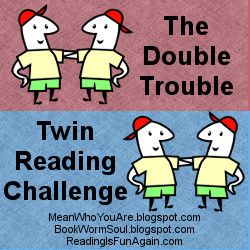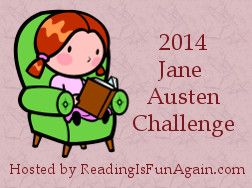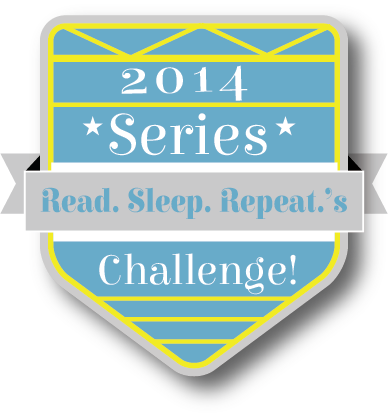Publisher: Simon & Schuster
Publication Date: August 2013
Pages: 306
Series: Stand Alone
Reason I Picked It Up: The Book Wheel's Review
I received this book from the publisher in exchange for an honest review.
Through the compelling stories of three American teenagers living abroad and attending the world’s top-notch public high schools, an investigative reporter explains how these systems cultivate the “smartest” kids on the planet.
America has long compared its students to top-performing kids of other nations. But how do the world’s education superpowers look through the eyes of an American high school student? Author Amanda Ripley follows three teenagers who chose to spend one school year living and learning in Finland, South Korea, and Poland. Through their adventures, Ripley discovers startling truths about how attitudes, parenting, and rigorous teaching have revolutionized these countries’ education results.
In The Smartest Kids in the World, Ripley’s astonishing new insights reveal that top-performing countries have achieved greatness only in the past several decades; that the kids who live there are learning to think for themselves, partly through failing early and often; and that persistence, hard work, and resilience matter more to our children’s life chances than self-esteem or sports.
Ripley’s investigative work seamlessly weaves narrative and research, providing in-depth analysis and gripping details that will keep you turning the pages. Written in a clear and engaging style, The Smartest Kids in the World will enliven public as well as dinner table debates over what makes for brighter and better students.
My husband and I have been having lots of conversations about higher education in the United States, so when I read The Book Wheel's review of The Smartest Kids in the World, I decided to read the book to get a better understanding of what children are learning prior to entering college.
I really enjoyed Ripley's writing style. I felt like I was going on a journey with the author. In my humble opinion, I think a conversational style is perfect for nonfiction books, because they are a journey of discovery for the author and are filled with the author's newly found opinions. Nonfiction books are typically filled with strongly supported hypotheses, so we might as well write them like that. As a science writer myself, I use the verbs to suggest, to indicate, to find a lot. I hate it when I am reading for pleasure and nonfiction writers describe strongly supported theories as fact.
I thought this book had a lot of great take away messages for both parents and teachers. In particular, Ripley reports that parents are most helpful when they read to their children when they are young and ask their children how their days were when they are older. Interesting, but not too surprising, children whose parents are very involved in the schools' extracurricular activities tend to perform worse than children whose parents are not involved. Ripley notes that this is only a correlation, so parents might be encouraging their kids to focus more on extracurricular activities more than schoolwork or that parents are getting involved because their kids are doing poorly and want the school to look at their children in a better light. In regards to teachers, Ripley's research indicates that teachers that provide rigor and push their students to do better are doing more for their students than teachers who provide all the answers. As someone who had teachers who gave me the answers and other teachers who made me rewrite a thesis sentence ten million times before I could write the rest of the essay, I can attest that teachers who made me work for my grade had my respect and trust.
Unlike some articles that I have read about school systems in other countries, Ripley does a good job showcasing what Finland, South Korea, and Poland do right and what these countries need to work on. It was refreshing to see that school systems around the world (not just the United States) have their problems. Of course, Ripley rightly shows that the United States' educational system has some serious problems and is ranked accordingly. She does give the United States hope; however, when she shows that countries like Poland have only made recent changes that have greatly improved their national rankings. We have hope as a country!
Let's talk about some of my concerns with this book. My major concern was regarding the research in this book. Ripley focuses the book on one international exam, the PISA, and three international exchange students' perspectives. Although she does speak with some other people, Ripley appeared to get most of her book from these three high school students. Granted, I think that their opinions are well thought out and interesting; however, I wish that she had interviewed a broader group of people both within the United States and in other countries.
When I first started the book, I thought Ripley had only three exchange students' perspectives, so I was a little worried. Then I discovered that she had done a survey including lots of students, so I felt better. Unfortunately, I then looked at the numbers. Ripley sent a survey out to 242 US students who attended school abroad and 1104 international students who attended school in the United States; however, only 37 American students and 165 international students responded. Ripley states that these data are still good; however, I cannot see how that is true without the needed statistical analyses that she does not provide. Throughout the book, she notes that 8 out of 10 students said "fill in the blank." I do not feel confident in these statements. The sample size is much to small. I may be wrong about this; however, the lack of any statistical explanation in the appendix does not lessen my concern. I think I would not have been so bothered by this, if she had cited more of her sources in the text. Because I did not know where statistics were coming from, I did not know if I could believe them. Ripley does have resources in the back of the book, but they are grouped by chapter, not line by line (at least this is how it was done in my galley copy). Some may argue that having lots of references in the text would be distracting, but Mary Roach does this in her books and they are very readable.
So how did I like this book? This is a tough question. I loved the writing style, and I though the exchange student perspective was a great way of getting at a unique perspective. I thought that Ripley had some interesting theories on some of the problems with the American educational system and possible ways of improving it. At the same time, this book had several flaws. First, I thought a larger variety of people needed to be interviewed for this book. Second, if Ripely wanted to use her student survey, she needed to show more evidence that the results were not skewed. I think I am particularly alarmed by this survey, because she only explains its limitations in the appendix that I doubt many people read. I would recommend this book to someone who is interested in a jumping off point for learning more about the American educational system and how it differs from other countries' systems with the caveat that the statistical analyses may be misleading.
Although I do have problems with the student survey statistics, I am still giving this book 3 out of 5 books for the international student exchange interviews and conversational style writing approach.
















6 comments:
I question the sample size too, really she needed samples from affluent neighborhoods, and lower-class neighborhood, rural and city. I am glad you walk away with some ideas and perspective. Sadly schools teach the test anymore. We read to our children, played games like trivia pursuit and were involved academically. We never used baby talk in our home, and spat out twenty-five cent words which aided them. Great review :)
What an interesting book. I think you're absolutely right to question her sample size - and where she's getting these reports from. I'd say what she's got may be enough to put together a hypothesis for further research, but a little iffy for broad based claims. Thanks for sharing!
I am glad that you feel the same way about the book. I am working on the analysis for my dissertation, so I am overly prone to questionable sample sizes. I was worried that I was nitpicking too much.
Thanks! As I mentioned above, I am overly sensitive about sample sizes right now, because I am working on my dissertation. It was definitely an interesting read.
OH man see I can't read books like these - my brain just shuts down. I feel like I should but I just can't. Its the same when I was pregnant everyone bought me all of these baby and health books etc...and I just hated them. It was the quickest way to put me to sleep!
I found the style of this book to be very readable, but I know what you mean about nonfiction books shutting your brain down. For grad school, I have read a lot of books and journal articles that were just horribly boring. Yesterday, I found myself reading the same paragraph over and over, because the content would not stay in my brain.
Leave a Comment